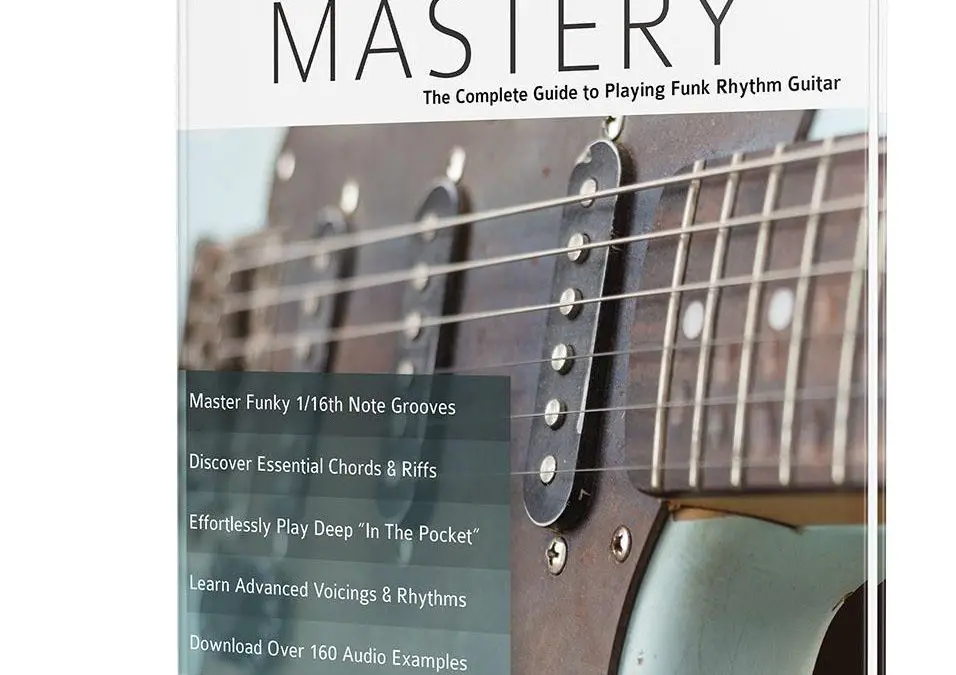Greetings, fellow guitar virtuosos! Are you tired of feeling like your rhythm skills are stuck in a musical rut? Do you dream of effortlessly grooving like a seasoned pro? Fear not, for we are here to unlock the secrets to rhythm mastery and set you on the path to guitar greatness! Join us as we delve into essential techniques and tips to help you unleash your inner rhythmic beast and leave your audience in awe. Let’s break free from the chains of boring strumming patterns and dive headfirst into a world of musical groove. Unlock the secrets to rhythm mastery and let your fingers do the talking!
Contents
- 1 Embracing the Metronome: A Guitarist’s Best Tool for Rhythm Precision
- 2 Understanding Time Signatures: The Foundation of Musical Rhythm
- 3 Strumming Techniques: Mastering the Pulse of Music
- 4 Fingerpicking Patterns: Enhancing Rhythmic Complexity
- 5 Synchronization Exercises: Aligning Your Hands for Flawless Rhythm
- 6 Exploring Rhythmic Nuances: Ghost Notes and Accents
- 7 Practicing with Backing Tracks: The Path to Rhythmic Versatility
- 8 FAQs
- 9 In Conclusion: Your Ticket to Rhythm Town!
Embracing the Metronome: A Guitarist’s Best Tool for Rhythm Precision
So, you’ve finally decided to take the plunge and embrace the metronome, huh? Well, buckle up, because this little ticking timekeeper is about to become your new best friend in the world of rhythm precision.
First things first, let’s talk about the metronome’s uncanny ability to expose all of your sloppy playing tendencies. Ever think you were nailing that riff perfectly, only to have the metronome reveal that your timing was about as consistent as a toddler on a sugar rush? Yeah, we’ve all been there. But fear not, my friend, because with a little practice and dedication, you’ll be locking in those rhythms like a pro in no time.
One of the key benefits of using a metronome is that it forces you to really listen to your playing. No more mindlessly strumming along and hoping for the best – with the metronome guiding your every note, you’ll start to notice subtle nuances in your timing that you never even knew were there. It’s like having a personal rhythm coach sitting right there on your music stand, cheering you on with every tick.
And let’s not forget about the satisfaction of finally mastering that tricky passage you’ve been struggling with for weeks. With the metronome as your trusty sidekick, you’ll be amazed at how quickly you can improve your rhythm precision and overall playing skills. So go ahead, embrace the metronome – your guitar playing will thank you for it!

Understanding Time Signatures: The Foundation of Musical Rhythm
So, you’ve decided to dive into the world of music and are now faced with the daunting task of understanding time signatures. Don’t worry, we’re here to help break it down for you in a way that even the rhythmically challenged can understand.
Time signatures are like the DNA of music – they provide the building blocks for rhythm and structure. Think of it as the recipe that gives music its funky flavor. Without time signatures, a song would just be a messy blob of notes with no direction or purpose.
Here are a few key things to remember when trying to wrap your head around time signatures:
- Top Number: This tells you how many beats are in each measure. It’s like counting the number of slices in a pizza – the more slices, the more delicious the pizza (or beats in this case).
- Bottom Number: This indicates the type of note that gets one beat. It’s the beat’s BFF, always hanging out together and making sure the rhythm stays in check.
- Dividing Beats: Time signatures also help divide beats into smaller chunks, kind of like breaking a Kit Kat bar into individual pieces. This helps keep the rhythm in check and prevents it from going off the rails.
So, next time you’re tapping your foot to the beat of your favorite song, take a moment to appreciate the time signature that’s keeping everything in line. Who knew a little number could have such a big impact on the way we experience music?
Strumming Techniques: Mastering the Pulse of Music
So you’ve got your guitar in hand, your fingers itching to strum away like a rockstar. But wait, before you go all out with your air guitar moves, let’s talk about mastering the pulse of music through some strumming techniques!
First things first, let’s get that basic strumming pattern down. Start with a simple down-up motion, keeping in mind the rhythm of the song. Imagine you’re flicking water off your fingers – smooth and consistent. Remember, it’s all about the groove!
Now, let’s spice things up with some variations. Try adding accents to certain beats to give your strumming more dynamic. Experiment with different patterns like down-up-down-up or down-down-up-up to keep things interesting and keep your audience on their toes.
And last but not least, don’t forget to practice, practice, practice! The more you strum, the better you’ll get at mastering the pulse of music. So keep on strumming, rockstar, and soon enough, you’ll be the heartbeat of the band!

Fingerpicking Patterns: Enhancing Rhythmic Complexity
So you’ve mastered the basic fingerpicking patterns and you’re looking to take your guitar playing to the next level? Congratulations, you’ve come to the right place! In this section, we’re going to dive deep into enhancing rhythmic complexity in your fingerpicking.
One way to spice up your fingerpicking patterns is to experiment with polyrhythms. What are polyrhythms, you ask? It’s when you play two different rhythms simultaneously, creating a layered and complex sound. Try playing a 3/4 pattern with your thumb while playing a 4/4 pattern with your fingers. Your brain might hate you for it, but your audience will thank you for the mind-bending experience!
Another fun way to add complexity to your fingerpicking is through syncopation. Syncopation is all about playing off the beat, throwing in unexpected accents to keep your listeners on their toes. Play around with accentuating the off-beats, experiment with skipping beats altogether, and don’t be afraid to get a little funky with it!
Lastly, don’t forget about fingerpicking dynamics. Varying the volume and intensity of your plucks can add a whole new dimension to your playing. Play softly, then suddenly unleash a barrage of thunderous notes. Your fingers are like tiny ninjas dancing across the strings, so use their stealth and power to your advantage!

Synchronization Exercises: Aligning Your Hands for Flawless Rhythm
Are you tired of feeling like your hands are constantly at war with each other when playing music? Have you ever tried to play a smooth and rhythmic piece, only to have your left hand racing ahead of your right hand like it’s in a marathon? Well, fear not my fellow musicians, because today we are going to dive into some synchronization exercises that will have your hands working together in perfect harmony.
First off, let’s talk about the importance of hand alignment when it comes to playing music. Think of your hands as two best friends who are trying to walk in sync. If one friend is always lagging behind or running ahead, it’s going to throw off the whole rhythm of your walk. The same goes for your hands. If one hand is constantly ahead or behind the other, it’s going to create a jumbled mess of notes and rhythms.
One exercise that can help align your hands is to practice playing scales in unison. Start off slowly, making sure that each finger is hitting the right note at the right time. As you start to feel more comfortable, gradually increase the speed. This will not only help with hand alignment, but also improve your finger dexterity and muscle memory.
Another fun exercise to try is playing rhythmic patterns with both hands. Start off simple, with a basic pattern like **quarter notes** or **eighth notes**. As you start to feel more confident, try adding in different accents and syncopations. This will not only help with hand synchronization, but also improve your overall sense of rhythm and musicality. So, grab your instrument and get ready to align those hands for some flawless rhythm!
Exploring Rhythmic Nuances: Ghost Notes and Accents
Have you ever wondered how drummers create those funky rhythms that make your body want to move involuntarily? It’s all about mastering the art of ghost notes and accents! These subtle yet powerful elements can take a simple beat and turn it into a groove that’ll have you dancing all night long.
Ghost notes are like the sneaky little ninjas of the drumming world. They’re quiet, almost imperceptible hits that add depth and complexity to a rhythm. Think of them as the seasoning in a delicious meal – you don’t always notice them, but they’re essential for creating a flavorful dish. Ghost notes can be played on the snare, toms, or even the hi-hat, and when used strategically, they can elevate a beat to a whole new level.
Now, let’s talk about accents. Accents are the flashy divas of the drum kit – they demand attention and grab your ear with their loud, powerful hits. By emphasizing certain beats within a measure, accents can create a dynamic and engaging rhythm that’s impossible to ignore. Whether you’re hitting the snare extra hard on the backbeat or giving the hi-hat a little extra oomph, accents bring a sense of drama and excitement to the music.
So, next time you’re jamming out to your favorite song, pay close attention to the ghost notes and accents in the rhythm. You’ll start to appreciate the subtle nuances that make the music come alive and maybe even feel inspired to experiment with your own drumming techniques. Who knows, you might just discover a whole new world of rhythmic possibilities!
Practicing with Backing Tracks: The Path to Rhythmic Versatility
So you want to become a rhythmic guru, huh? Well, practicing with backing tracks is your golden ticket to achieving that level of groove mastery. Imagine yourself strumming along to a funky bass line or jamming out with a soulful saxophone – the possibilities are endless!
Backin’ it up with some backing tracks not only adds flair to your practice sessions, but it also helps you develop your sense of timing and groove. With each track you play along to, you’ll be sharpening your rhythmic skills and expanding your musical vocabulary. Plus, it’s way more fun than counting out metronome clicks all day long!
Don’t be afraid to experiment with different genres and styles of backing tracks. Whether you’re into jazz, blues, rock, or funk, there’s a track out there waiting for you to groove along with it. Mix it up to challenge yourself and keep things fresh – you never know what rhythmic revelations you might uncover!
So grab your instrument, cue up a killer backing track, and let your inner rhythm master shine. Before you know it, you’ll be busting out beats and grooves like never before. Practice makes perfect, after all – but practicing with backing tracks makes you a rhythmic rockstar!
FAQs
What are some common challenges guitarists face when trying to master rhythm?
Oh, where do I begin? Timing issues, inconsistent strumming patterns, inability to keep up with complex rhythms, lack of groove…the list goes on! But fear not, dear reader, for all these challenges can be overcome with practice and perseverance!
What are some essential techniques for improving rhythm mastery?
Ah, the million-dollar question! To unlock rhythm mastery, you must first work on your sense of timing. Practice with a metronome, focus on counting beats, and try clapping along to different rhythms. Additionally, master various strumming patterns, experiment with syncopation, and don’t be afraid to groove with the music!
How can I improve my groove as a guitarist?
Ah, groove, the elusive but oh-so-important element of music! To enhance your groove, try listening to different genres of music, pay attention to the rhythm section, and practice playing along with drum tracks. Embrace the funk, feel the soul, and let your body move to the music!
What role does consistency play in mastering rhythm as a guitarist?
Consistency is key, my friend! To master rhythm, you must practice regularly, set specific goals, and challenge yourself with new rhythms and patterns. Remember, Rome wasn’t built in a day, and neither is rhythm mastery. So keep at it, stay consistent, and watch your skills grow!
Any tips for staying motivated while working on rhythm mastery?
Ah, the eternal struggle of every musician – staying motivated! To keep your spirits high while working on rhythm mastery, mix things up, set small achievable goals, reward yourself for progress, and most importantly, have fun with the process! Remember, music is a journey, not a destination, so enjoy the ride!
In Conclusion: Your Ticket to Rhythm Town!
Congratulations, fellow guitarists! You have now acquired the keys to the rhythm kingdom. With these essential techniques under your belt, you are well on your way to becoming a master of the groove. So go forth, strum those strings, and make the world your dance floor. Remember, when in doubt, just keep on rocking in the free world!



